University of Newcastle
Type of resources
Topics
Keywords
Contact for the resource
Provided by
Years
Formats
Representation types
Update frequencies
Resolution
-
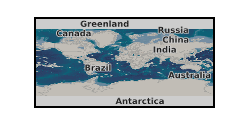
Terrestrial laser scanning data of the slopes above the A83 Rest and Be Thankful collected by a Riegl LMS Z620i instrument in 2016 after Storms Desmond and Frank from 3 positions. These data are scanner centric coordinates which the end-user needs to align and (if required) align into a global coordinate system. Data are in raw format, supplied as .las with scaled intensity included.
-

Imagery taken with a DJI Phantom 4 Pro drone using the as supplied RGB camera for part of the slopes above the A83 Rest and Be Thankful, Scotland in 2016. Images cover part of the slopes affected by Storms Desmond and Frank.
-
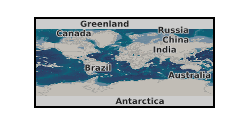
The data was generated from a range of laboratory experiments where a range of silicate rocks (granite, basalt, peridotite) were crushed in oxygen-free conditions, deoxygenated water added, and the generation of hydrogen gas and hydrogen peroxide followed over a week. Results were compared to rock-free controls. The data was collected to provide insight into the production of oxidants (such as hydrogen peroxide) along tectonically active regions of the subsurface, and how the oxidants might influence subsurface microbiology.
-
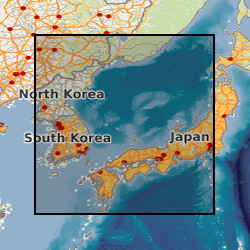
This award was made as a sailing participant of IODP Expedition 346, an international ocean drilling programme that NERC subscribe to. As such there was a lot of data generated that is owned and kept by IODP and which is freely available at: web.iodp.tamu.edu/UWQ/. Published Paper: Integrated Ocean Drilling Program Expedition 346 Scientific Prospectus - Asian Monsoon Onset and evolution of millennial-scale variability of Asian monsoon and its possible relation with Himalaya and Tibetan Plateau uplift. doi:10.2204/iodp.sp.346.2013
-
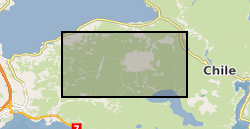
Helicopter borne LiDAR and aerial photo survey of lahar pathways deposited during the April 2015 Volcan Calbuco eruption. Terrestrial Laser Scanning data for July 2015.
-
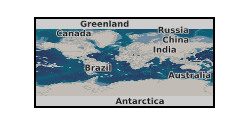
Rotating Rayleigh-Benard convection. Table of the input and output parameters of the simulations. Snapshot of the temperature field, three components of the velocity and three components of the magnetic field in 3D. Data generated with a magnetohydrodynamical code of rotating Boussinesq convection in planar geometry (Cattaneo et al. 2003 ApJ 588 1183-1198). Data published in Guervilly, Hughes & Jones 2014 JFM 758 407-435 (DOI:10.1017/jfm.2014.542) and Guervilly, Hughes & Jones 2015 PRE 91 041001 (DOI: 10.1103/PhysRevE.91.041001)
-
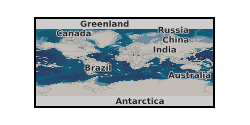
Data extracted from simulations of rapidly-rotating Boussinesq convection driven by internal heating in a full sphere and published in Guervilly & Cardin, 2017, Geophys. J. Int. 211, 455-471 (DOI:10.1093/gji/ggx315). The simulations were run for Ekman numbers of 1e-7 and 1e-8 and Prandtl numbers of 0.1 and 0.01. The data consist of tables of input and output parameters (Reynolds number of the convective and zonal flows, convective lengthscale and Rhines scale).
-
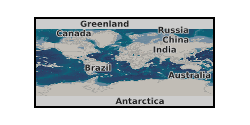
Data extracted from numerical simulations of rotating Boussinesq convection in spherical geometry and published in Guervilly, Cardin & Schaeffer (2019, https://doi.org/10.1038/s41586-019-1301-5). The simulations were run with Ekman numbers varying between 1e-6 and 1e-11, Rayleigh numbers between 6e7 and 5.25e13 and Prandtl numbers between 0.1 and 0.01. The data include: power spectra of the kinetic energy as a function of the azimuthal wavenumber; Rossby numbers and convective length scale; radial velocity in the equatorial plane for 4 selected simulations at varying Ekman number (Ek=1e-8 to 1e-11).
-
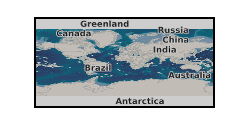
Data extracted from simulations of Boussinesq convection in a rotating plane layer where the horizontal box sizes are unequal (Lx < Ly where the xy plane is horizontal). Data published in Guervilly & Hughes, 2017, Phys. Rev. Fluids 2, 113503 (DOI: 10.1103/PhysRevFluids.2.113503).
-

Two sediment depth cores were collected from the River Esk estuary during low tide near the town of Ravenglass, UK. Cores were collected by the University of Manchester. Cores were sliced at 1 cm intervals from 0 - 10 cm, and at 2 cm intervals thereafter. Slicing was performed in an anaerobic bag. Samples were transferred to Newcastle University for DNA extraction. A total of 19 samples were extracted for core 1, and 18 samples extracted for core 2.
 NERC Data Catalogue Service
NERC Data Catalogue Service